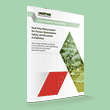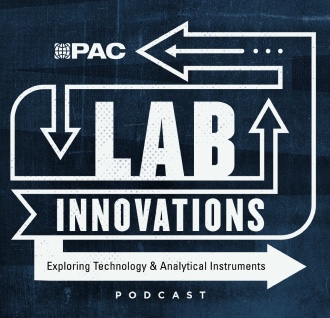Feb-2024
Decarbonising the aviation industry
The future of sustainable aviation fuels is driven by a commitment to ambitious decarbonisation targets and continuous innovation.
Yvon Bernard, Carine Leclercq and Nicolas Simon
Axens
Viewed : 5234
Article Summary
To address the array of climate targets set by national and international authorities worldwide, industries in every sector must seek efficient and dependable solutions in the transition from fossil fuels. These heightened demands, driven by environmental concerns and sustainability regulations, have created the complex challenge of finding cost-effective solutions to reduce reliance on fossil fuel resources.
Achieving these ambitious targets – as outlined by the Intergovernmental Panel on Climate Change and various national pathways toward achieving net-zero emissions – will require behavioural changes, efficiency gains, and the leverage of renewable or low-carbon energy sources available around the world, including solar energy, wind energy, biomass, and more.
Rising sustainability standards in the aviation industry
Sustainable aviation fuel (SAF) is one of the solutions to decarbonise the aviation industry. Just as SAF must be combined with other decarbonisation solutions, experts do not expect that one single SAF production technology will be able to meet the increasing demand for this fuel. For this reason, government agencies, refining companies, and aviation industry stakeholders are collectively investigating the full range of technology pathways to substitute fossil-based jet fuel with SAF based on renewable sources. These sources include agricultural and forestry residues, alcohols, wastes, and energy crops, as well as CO₂ and renewable hydrogen.
Today, aviation accounts for 3% of global greenhouse gas emissions, including 890 megatons of CO₂ emitted in 2022. For this reason, the International Civil Aviation Organization has set ambitious goals to reduce net CO₂ emissions by half by 2050, in comparison to 2005 levels. Furthermore, the global air transport industry, through the Air Transport Action Group, has embraced a long-term climate goal of net-zero emissions by 2050. This confirms the commitment of global airlines, airports, air traffic management, and manufacturers of aircraft and jet engines to reduce their CO₂ emissions in line with the Paris Agreement’s goal of limiting global warming to 1.5°C by 2100 (UNFCC, 2015).
Main regulatory frameworks for SAF
SAF will be essential to achieving the aviation industry’s ambitious decarbonisation targets. Regulations will play a large part in increasing the share of SAF used in aviation and defining the products that will qualify as SAF. Currently, there is no global consensus on these regulations. However, two main approaches currently exist in the industry.
In the US, many fuel purchasers are considering carbon-intensity-based metrics to evaluate fuel sustainability, commonly utilising tools such as the Greenhouse Gases, Regulated Emissions, and Energy Use in Transportation (GREET) model developed by Argonne National Laboratory. Such models do not group feedstocks or processes by category, but rather they scientifically calculate a given feedstock’s overall greenhouse gas emission profile considering its production, transportation, processing, and use. The outcome is a scientifically based and quantified Carbon Intensity (CI) score. The CI score then determines the sustainability of a given fuel compared to fossil fuel baselines. Additionally, it provides a foundation for regulatory and credit structures to incentivise CI reductions throughout the entire SAF value chain.
A different approach is taken in Europe, where the European Union has committed to reducing its overall emissions by 55% by 2030. To reach this goal, the European Commission introduced its ‘Fit for 55’ package of legislative proposals. Among them, 11 initiatives have a direct impact on transport, and ‘ReFuelEU’ is the initiative dedicated to aviation. Under this initiative, the SAF requirement will rise from 2% of aviation fuels in 2025 to 6% by 2030 and then 70% in 2050. A sub-obligation of this SAF mandate requires e-SAF to increase from 1.2% of aviation fuels in 2030 to 35% in 2050. European regulations promote advanced biofuels sourced from feedstocks that are not in direct or indirect competition with food resources. These include recycled carbon fuels (potentially using waste from non-renewable sources) and low-carbon fuels (possibly including hydrogen produced from nuclear power). These options all share the goal of achieving at least a 70% reduction in greenhouse gas emissions.
In addition to these two major regulatory frameworks, several other countries (such as China, India, and Thailand) are currently preparing their SAF regulations. These will be released shortly so the industry can prepare for the first milestones.
Expanding the global supply of SAF
To align with all regulations, the aviation industry must significantly ramp up its adoption of SAF in the coming years. The industry will have to expand the range and increase the production of available feedstock for this to be possible. Today, most of the world’s SAF comes from vegetable oils such as rapeseed and palm oil. Some regulations, such as the revised European Renewable Energy Directive, ban the use of soy and palm oils for biofuels because the feedstock is in competition with the food industry (EUR-Lex, 2023). As a result, lipidic second-generation feedstocks, including animal fats, used cooking oil, and palm oil mill effluent, are taking over.
These feedstocks will only allow the industry to meet the first milestone with few percent of SAF incorporation. To move beyond this plateau caused by the limited volume of lipidic second-generation feedstock, the second phase will require constructing industrial plants to produce SAF from other feedstocks.
Three major feedstocks for the future of SAF
In collaboration with its partners, Axens has already developed expertise to utilise the next generation of feedstocks for the production of SAF and e-SAF. These include biomass, which are typically residues from agriculture, forestry, and other waste products that do not compete with food crops. CO₂ captured from sources such as flue gas, cement or steel factories and power plants or biogenic CO2 (produced from biomass) combined with green H2 (produced with low-carbon electricity) are the feedstocks for e-SAF (dedicated to aviation fuels) or e-biofuels (generic name). In both cases, the feedstocks are combined with hydrogen to produce e-fuels or SAF.
Expertise in biofuel production:
The biomass pathway
The ASTM D7566 standard for aviation fuels allows for several technological pathways for the production of synthetic kerosene. Axens offers commercial solutions for some of these, such as HEFA-SPK, ATJ-SPK, and FT-SPK, which can be extended to both SAF and e-SAF (whenever green H2 is added) production.
Sponsor:
Add your rating:
Current Rating: 4

















